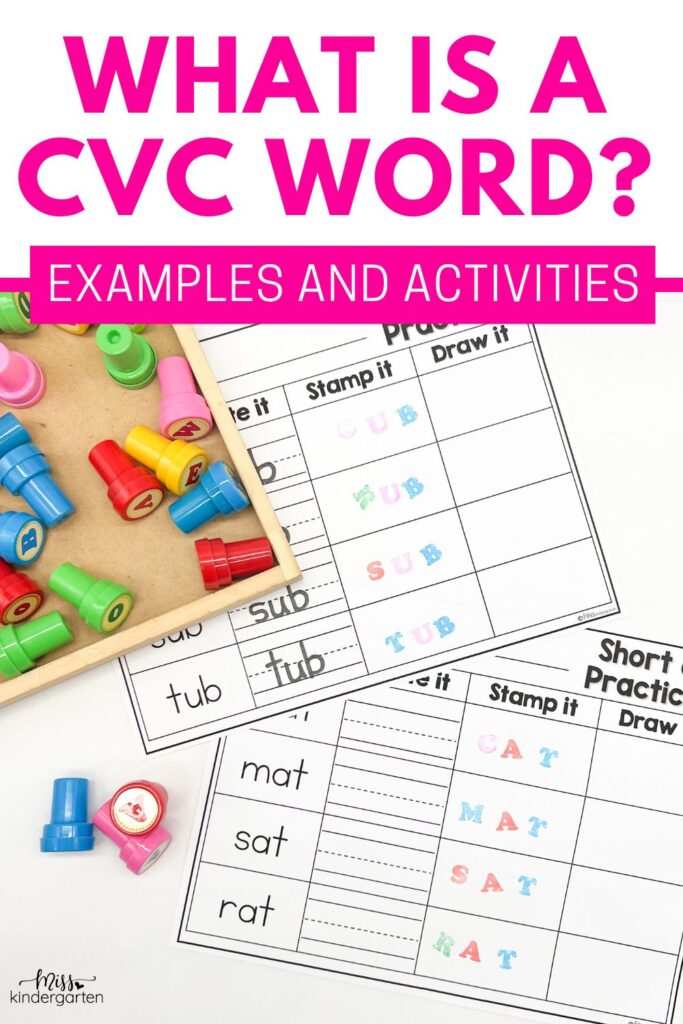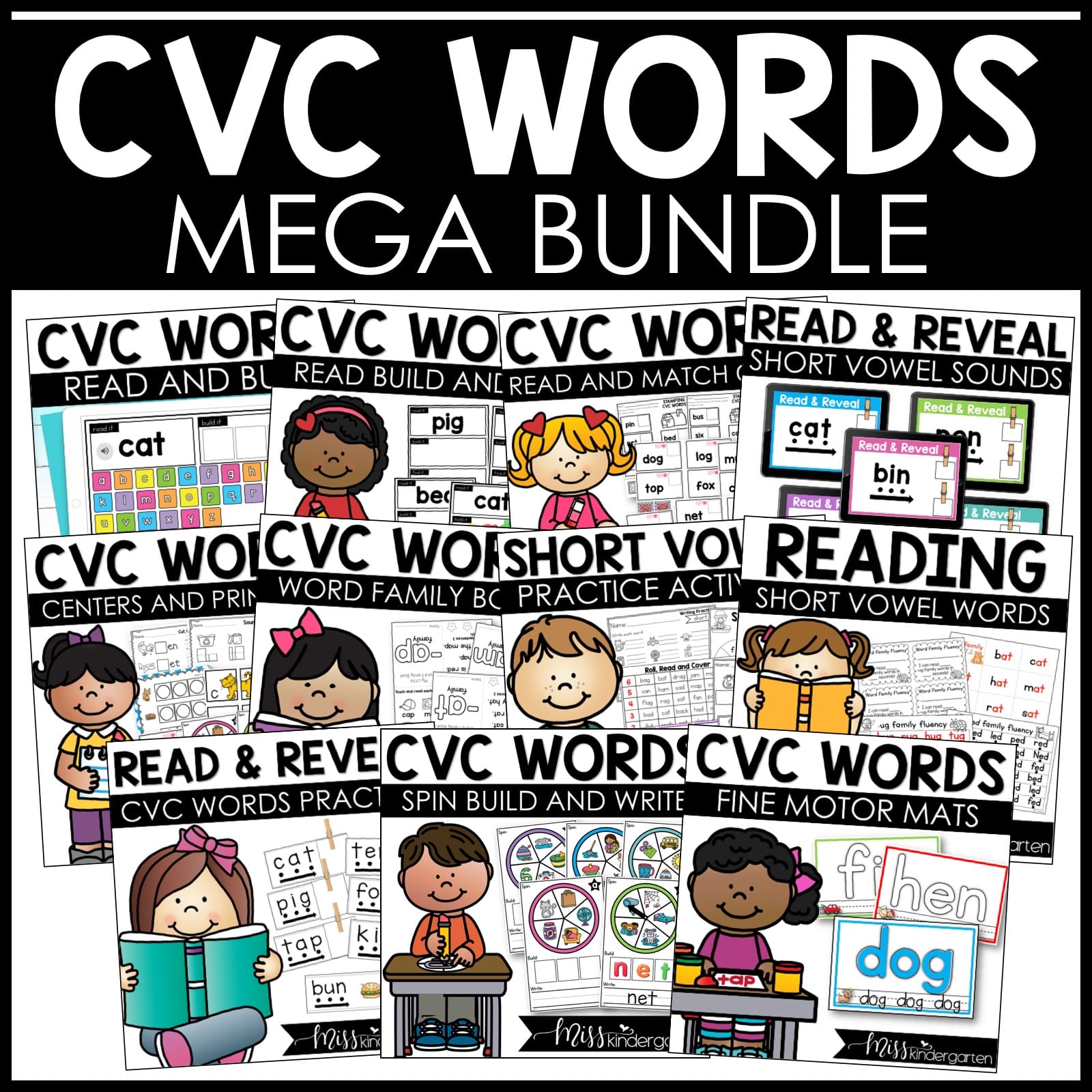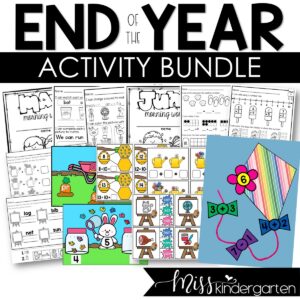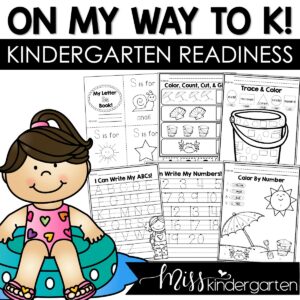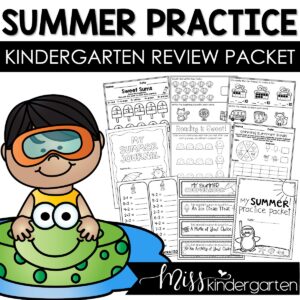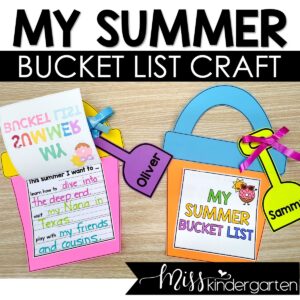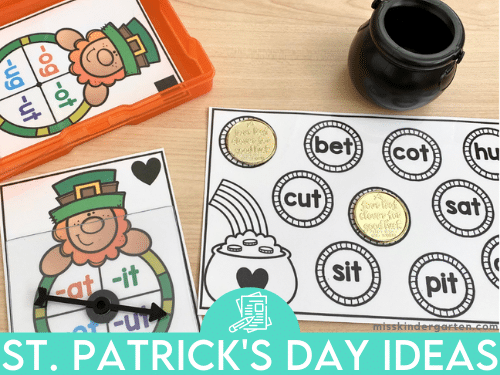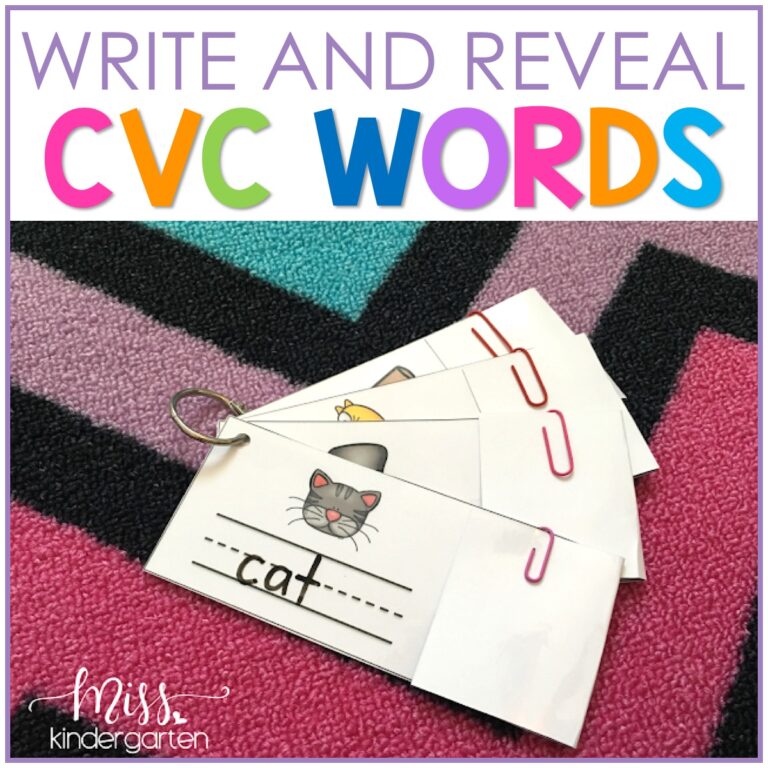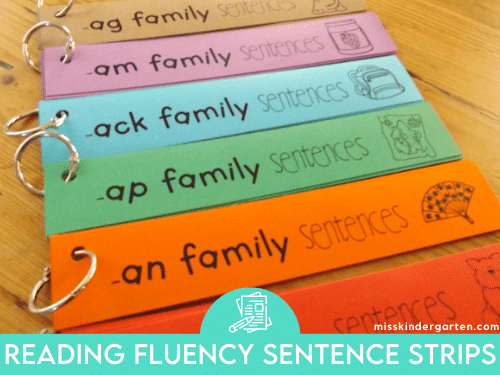What is a CVC Word? Examples and Teaching Activities
If you are new to teaching literacy to young students, you might start to feel overwhelmed by all of the new lingo and acronyms! One of these terms is “CVC words”! If you find yourself wondering “what is a CVC word?” this is the post for you! I’ll share examples along with CVC Activities for introducing and practicing this phonics skill in your classroom.
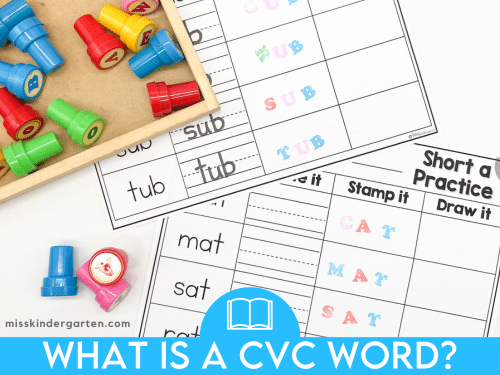
This post contains affiliate links. By purchasing through this link, we get a small commission. Rest assured – we only share links to products that we use and love!
What is a CVC Word?
CVC stands for “consonant-vowel-consonant” words. A CVC word is a three-letter word made up of a consonant, followed by a vowel, and ending with another consonant. This letter arrangement creates a closed syllable, so the vowel sound is almost always short in a CVC word. Here are some examples of CVC words by vowel sound:
- cap, mat, dad
- bet, red, pen
- pit, fin, rid
- mop, hot, box
- run, mud, cut
As with most rules in the English language, there are a few exceptions (like “put”) that don’t follow the common short vowel CVC pattern. Otherwise, the consistent pattern of CVC words makes them easy to teach to young readers!
Why Do We Teach CVC Words in Kindergarten?
Since CVC words are easily decodable, they help beginning readers feel successful when learning how to read. Once your students master reading CVC words, they can start learning to read other phonics patterns including magic e words (long vowel words), vowel teams, and words that have blends and digraphs (two consonants next to each other in a word).
Building a Foundation for CVC Word Reading
At the beginning of the school year, you can introduce students to the concept of CVC words without using any letters! It’s important to work on phonemic awareness first so that students understand that a word is made up of letter sounds. These CVC sound boxes are a great way to help students hear the sounds in a word. Plus, they build a foundation for recognizing the individual letters in a CVC word.
First, say the word and count the boxes to see how many sounds are in the word. Then say each sound on its own and push up a chip as you say it. For the word cat, you would say /c/, /a/, /t/ and push up 3 chips. After pushing up all the sounds, practice blending the sounds into the word. (I always tell students to say it “just like we talk”.) Students can slide their finger under the word or push a toy car along the arrow when saying the word.
To extend the learning, you can also point to each box and ask your students to tell you the sound each one makes. You can also give the students a sound and ask students to point to the correct box.
It’s also a lot of fun to use magnetic bingo chips to push up the sounds, then sweep the magnetic wand across the sounds when saying the whole word.
5 More Activities to Practice CVC Words
Once your students have a strong grasp of phonemic awareness and know the letter sounds, you can start incorporating this knowledge into CVC word practice. Here are some of my favorite activities to use!
1. Muffin Tin Spelling
Did you know muffin tins are perfect magnet boards for building CVC words?! The magnet letters stick to the muffin tin, too. Just add some oven mitts and you have a super fun center! When your kiddos are ready for four-letter words, just turn the muffin tin horizontally.

2. CVC Play Dough Mats
Play dough mats are the perfect mix of learning and fun. Almost every kid loves to use play dough and it really helps to build the fine motor muscles in their fingers. These mats are super versatile and can be used in a number of different ways, from morning work to literacy centers!

3. CVC Magnet Letters
I’m a strong believer in using multiple modalities to teach and reinforce new concepts. By shaking things up with different manipulatives, you can keep students motivated and engaged in the repetition needed to master new skills.
Along with the play dough I mentioned above, you can also have students use stamps, beads, and magnet letters to practice making CVC words. Hands-on learning for the win! Not only do these activities keep students engaged, but they also help students strengthen their fine motor skills throughout the school day.
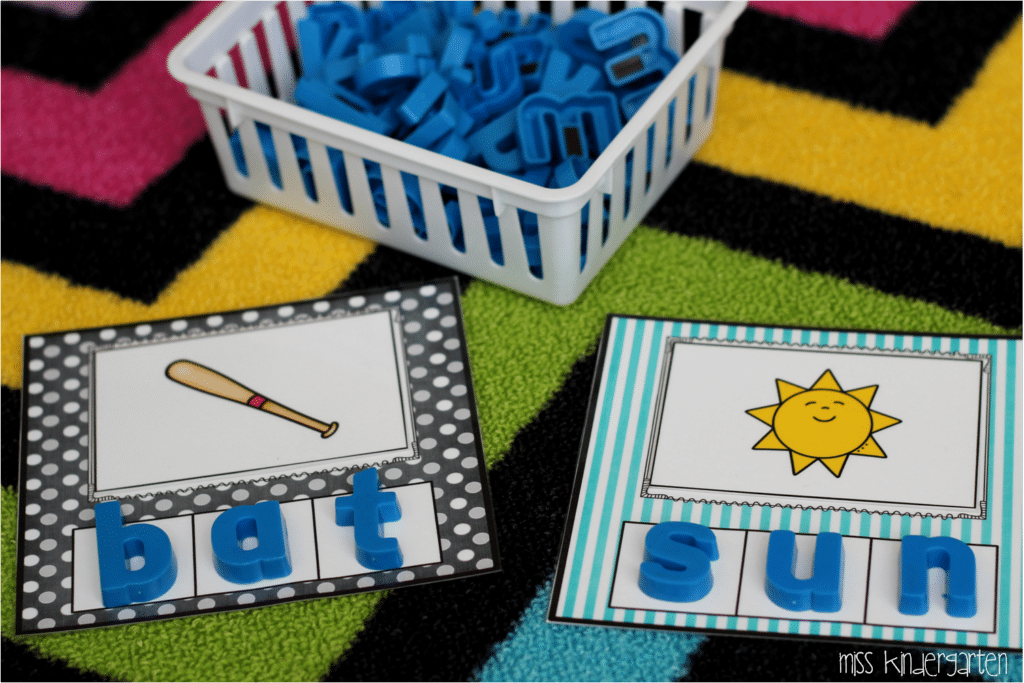
4. CVC Word Builders
Cutting, gluing, and manipulating letters to build CVC words is another great strategy. Word builders incorporate all of those skills into one fun little activity! Head over to my post where you can read all about word builders and try them out for FREE!

5. Stamping CVC Words
Your students will love using alphabet stamps to practice building CVC words! They’re great for letter recognition and fine motor practice. Plus, they add a fun element to your paper and pencil tasks. Stamping activities are a great addition to centers and morning work!

I hope that this post has clarified the meaning of CVC words and given you some ideas for introducing this phonics skill in your classroom. For some additional ideas, be sure to check out my post with tips for teaching CVC words in kindergarten!
Printable CVC Word Activities for Kindergarten
I have put together a complete CVC toolkit to help you teach this phonics skill in your classroom! You’ll find activities that work perfectly for introducing CVC words all the way to reading them within passages. With this CVC word mega bundle, you can incorporate fun into your literacy centers, morning work, and more! Just click below to take a closer look at everything included in this resource.
Small Group Reading Intervention CVC Words Activities Phonics Games & Centers
Save These CVC Word Activities and Tips
Be sure to save this post if you’d like to come back to it later! Just add the pin below to your favorite teaching board on Pinterest. You can quickly find this post when you’re ready to introduce your students to CVC words.
